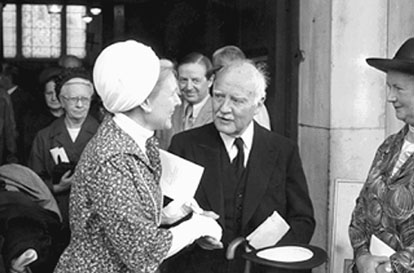

 | Page 848 |  |
then in Syria at Chagar Bazaar and Tell Brak, where he discovered third-millenium shrines and the Palace of Naram-Sin.
Between 1940 and 1945, he served as a liaison officer with the Allied forces in North Africa. In 1947, Mallowan took up the chair of western Asiatic archaeology at London University and returned to Iraq as director of the British School, where he began to excavate sir austen henry layard’s great site of nimrud. Over the next twelve years the site provided a wealth of architectural remains, artifacts, and texts, which were published in the monumental two-volume work Nimrud and Its Remains (1966). In 1962, he returned to Oxford as a fellow of All Souls College, was vice-president of the British Academy in 1961–1962, and trustee of the British Museum from 1973 to 1978. He was editor of Iraq (1948–1971) and an advisory editor of antiquity. He became a commander of the Order of the British Empire in 1960 and was knighted in 1968.

Max Mallowan and his wife, Agatha Christie, leave their home in London at the start of their journey to northern Iraq for archaeological research.
(Bettmann/Corbis)
References
Mallowan, Max. 1977. Mallowan’s Memoirs. London: Collins.
(1921– )
Malmer was born in Scania, sweden, and studied prehistory at Lund University, receiving his Ph.D. in 1962. Malmer moved to Stockholm to become head of the Stone and Bronze Age Department at the Museum of National Antiquities in 1959, where he began to publish on archaeological methodology and theory while continuing extensive excavations. In 1970 he became professor of archaeology at Lund University, and in 1973 he was appointed to the chair of archaeology at the University of Stockholm.
Malmer is a key figure in discussions within Scandinavian archaeology on quantitative and taxonomic methods and the interpretation of archaeological data. His most significant influence has been to introduce and argue for the rational replacement of the predominant inductive
 |  |